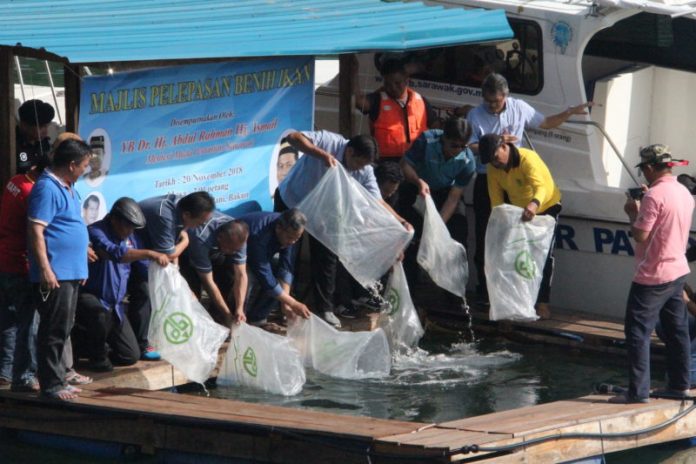
By Peter Sibon
BAKUN, Belaga, Nov 22: With a size that is bigger than the island Republic of Singapore, Bakun Hydroelectric Power (HEP) Dam lake has huge potential to be a major producer of empurau, tilapia and other indigenous fish in the country, said Assistant Minister of Agriculture Dr Abdul Rahman Ismail.
He said to achieve this objective, a blueprint had to be implemented by the proposed Lake Agency, which has yet to be set up.
“We need the necessary funding and, hopefully, with the setting up of the Lake Agency, we will have the necessary resources to achieve that dream,” Dr Abdul Rahman told reporters covering the release of empurau fry at Long Jelini, upstream of the Bakun HEP Dam lake here on Wednesday.
He also stressed that to achieve the objective, there was a need for private sector involvement to assist the state government in the whole supply chain.
“This is also our direction — to get the involvement of the private sector. Now, we already signed Memorandums of Agreement (MoA) with six companies as anchor companies to produce things such as durians, pineapples, bananas, shrimps and kelulut (stingless bee).
“So, we also hope that there will be private sector involvement for fish farming, especially for tilapia and empurau as there is a huge market in places such as China. Their involvement is crucial to assist the state in the whole supply chain, from production to marketing,” he explained.
On a related issue, Dr Abdul Rahman said his department was now trying to replenish all river systems in Sarawak following improved conditions, which in the past was messed up due largely to logging activities and oil palm plantations.
“At the same, we also need the cooperation of the people and enforcement agencies, such as the police, to curb fish bombing and fish poisoning activities. But what is most crucial is education to improve our fish population in our rivers,” he opined.
On the Tagang system, Dr Abdul Rahman said currently there are 83 of them in various river systems across the state, but only two have been proven to be successful, namely in Kampung Terbat in Serian Division and Long Lidong in Lawas. Both are rearing semah.
Meanwhile, he hoped that the inland fisheries, livestock and crop sections of the Agriculture Department could be elevated as separate departments, similar to the Department of Veterinary Services (DVS) Sarawak, so that they could focus on developing their specific areas.
“We need both expertise and the resources to develop our agriculture sector so that we can become a high-income state by 2030,” he reckoned. — DayakDaily







